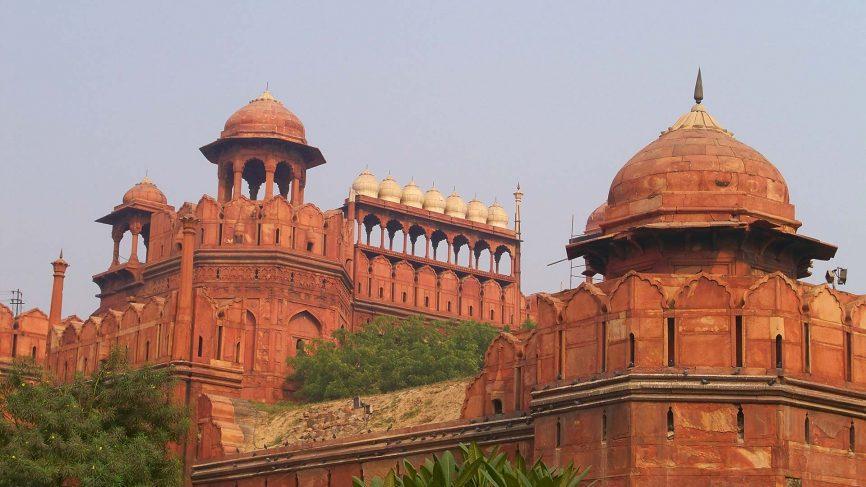Delhi is not only the capital of Indian subcontinent but is also filled with various historical monuments spread all across the city. This is because it has been center for several political and economic activities right from Mughals to the British rule era. As many kinds have considered and planted it to be capital for their activities, several monuments have risen over a period of time in the capital city. The city hence has seen architectural marvels which baffle and amazes the visitors every day with the beauty.
Further, the city has UNESCO world heritage sites around as major and prominent attractions for travelers all around the world. People who love history prefers to visit these world heritage sites. There are three world heritage sites by UNESCO in Delhi which you must consider visiting and place them in your checklist while you are traveling to Delhi. Check these out!
Table of Contents
Red Fort
The first one which tops the list of world heritage site in Delhi is the grand Red Fort. It is situated right in front of Chandni Chowk near the bank of river Yamuna. Constructed from 1639 to 1648, you find several historic places inside the fort such as Naubat Khana, Diwan-i-Aam, Rang Mahal, Mumtaz Mahal, Khas, Moti Masjid, Hayat Baksh Garden and others. Though it has been several years of this construction, it still stands as marvelous as before. It was built by Mughal emperor Shah Jahan who has established a capital in Delhi during his rule. This place still stands prominent and significant as the Independence Day celebrations are held in this site every year. The prime minister of India hoists national flag and delivers a speech from this site ever since India has gained independence. In addition, one can also have the delight of watching beautiful light and sound show in the evening which signifies a
lot on Mughal history. It is one of the most famous monuments in Delhi
Humayun’s Tomb
Another most prominent world heritage site which is situated in the national capital is Humayun’s Tomb. It is again one of the most beautiful examples of the architectural marvels of Mughals. The world’s wonder, Taj Mahal is also a copy of Humayun’s Tomb as it is much older than the former. This construction was finished by 1572 which has later inspired the construction of mighty Taj Mahal.
However, Humayun’s Tomb does not have minarets like Taj Mahal. This construction has been done in the memory of her husband by Hamida Bano Begum, nine years after Humayun’s death. The tomb is around 42.5 meter high which is constructed after seeking inspiration by Persian architecture with a bit of Indian touch. It is further surrounded by lush green char bagh garden which adds to its beauty. This site still stands as a popular destination in India. The huge central arch and octagonal shape add aesthetics to this architecture in Mughar era. One can visit this world heritage site situated at present in Mathura road opposite Nizamuddin Dargah. It is one of the most oldest monuments in Delhi.
Qutub Minar
This is a world heritage site with not only tallest tower in Delhi, but rather in India. This momentous structure has a height of around 73 meters is constructed by red sandstone and marble. Situated in present-day Mehrauli, the construction has started by Qutub ud din Aibak but completed later by Iltutmish. The top floor was again later constructed by Firoz Shah Tuglaq which still remains intact. This monument was constructed to celebrate the supremacy of Muslims in India. Since this monument is constructed by three different people, one can notice differences between the first two floors and the above three floors. It is one of the most visited monuments in Delhi.
One can further also find the remains of Quwat ul Islam mosque which is one of the earliest and oldest mosques in India here. Further, there is unfinished minar which is started by Alauddin Khilji which has not been finished. The other monuments within the Qutub complex include Ashoka Pillar and other tombs.
India Gate
India Gate, 42m high arch is situated in the middle of a crossroad in the capital city. This is built commemorating 70,000 Indian soldiers who have lost their lives for the cause of the British Army in world war I. This monument in Delhi is laid by Duke of Connaught in 1921. The monument stands on red Bharatpur stone and rises to huge molding shape. At night, the gate is floodlit with fountains with colored lights. There are lush green gardens around the structure which also hence is known to be a great picnic spot.
Safdarjung Tomb
The Safdarjung Tomb is a garden tomb situated in the National City. This is just like the tradition of Humayun’s Tomb however, the former is not in such a grand scale. Built around 1754, the viceroy of Awadh under Mughal emperor has started it. There are several small pavilions such as Jangli Mahal, Moti Mahal and Badshah Pasand in the Tomb. The archeological survey of India still maintains a library in the main gateway of the tomb.
Ugrasen ki Baoli
This is a renowned monument visited by tourists from all part of the country when in Delhi. Built by Maharaja Agrasen, it was constructed with red sandstone. It was constructed to serve as a water reservoir in ancient times which could be reached by stepping down the stairs. Maintained by archeological survey of India, it is a must visit monuments in Delhi due to the architectural marvel. It is also a favorite spot for several photographers.
Purana Qila
It was in 1538 that Mughal king Shah Suri has constructed this monument. It is one of the ancient forts of Delhi. The majestic history can be witnessed in this historical site which is spread across five miles. The fort is surrounded also by river Yamuna which adds beauty element to it. There are three magnificent entrances to this qila, Humayun Darwaza, Bara Darwaza, and Talaqui Darwaza. With masjids and museums located inside the qila, this site is popular among tourists and travelers.
Jantar Mantar
Jantar Mantar was constructed around the 1720s by Maharaja Jai Singh of Jaipur. It was built as an observatory in several places including Mathura, Varanasi, and Ujjain. The king came up with astronomical instruments which can take up measurements to tell time and astronomical features at that particular point.
Mentioned above are the world heritage site monuments in Delhi. Do not forget to add these into your bucket list while you plan to visit the capital city. These sites with such magnificence and architectural marvels for sure will make your jaw drop with awe and wonder.

